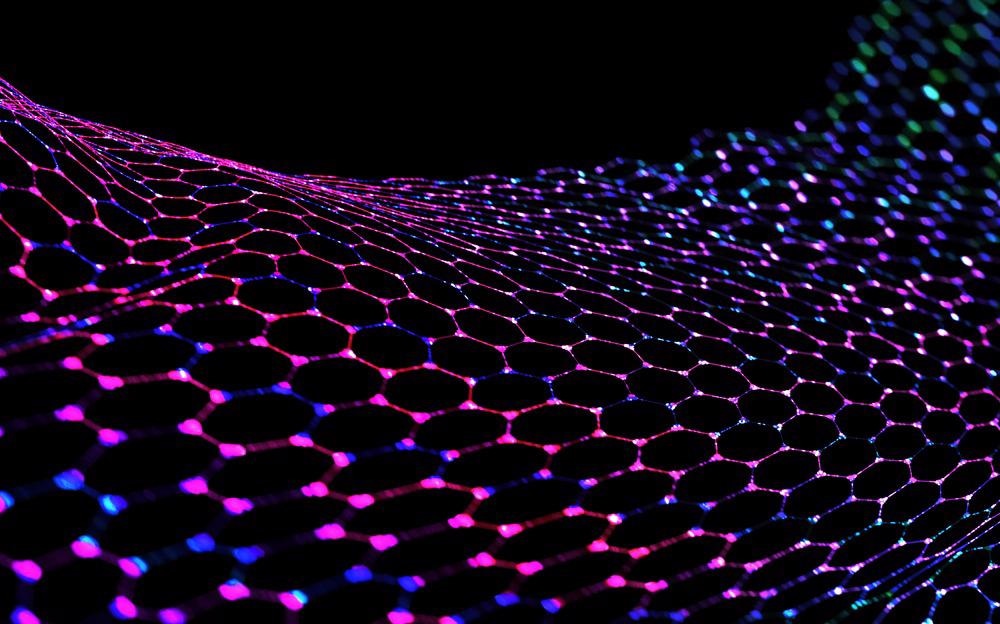Biosensing is an innovative approach for real-time health monitoring and point-of-care diagnostics via direct human-machine interaction. To explore the potential of this field, a paper published in Materials Letters has demonstrated the application of 2D graphene-based nano-biosensing systems.

Study: Emergence of high-performing and ultra-fast 2D-graphene nano-biosensing system. Image Credit: Marco de Benedictis/Shutterstock.com
Smart Nano-Biosensing
2D layered nanomaterials have emerged as attractive targets for the field of wearable technology. These layered materials possess strong covalent bonding within the individual layers. Weak interactions between the layers aid exfoliation of the material. 2D layered nanomaterials have been identified as key materials for fields such as bioimaging, biosensing, nanomedicine, chemical sensing, and electrocatalysis.
Biosensor properties such as response time, electrical sensing, and sensitivity are improved by the inclusion of 2D layered nanomaterials. Promising transduction elements that have been identified for enhancing the selectivity of devices with low detection limits include MXenes, 2D graphite and graphene-like materials, and Molybdenum disulfide. This property aids early diagnosis of disease biomarkers and as such, is in high demand for the biosensor industry.
Additionally, these materials display enhanced thermal, electroactive, and mechanical properties which make them ideal for cutting edge electrochemical/capacitance-based nanosystems. The recent Covid-19 pandemic has highlighted the need for point-of-care and diagnostic biosensing devices with advanced properties and characteristics that aid the early detection of infections. Fast, selective, sensitive, and wearable smart biosensors are in demand by the healthcare industry.
Using 2D Graphene for Nano-Biosensors
Recently, advances in the field of biosensing have led to several devices being developed including microelectrochemical systems, field-effective transistors, electrochemical, and colorimetric biosensors. Designs utilizing different advanced materials have been explored in numerous research studies.
2D Graphene has emerged as a forerunner in the search for materials that can be utilized for smart biosensors. It is easily synthesized into numerous structures such as nanosheets, ribbons, foams, and films is cost-effective, scalable, and has superior properties such as high ionic mobility and mechanical strength. Additionally, it has a large surface area and high thermal conductivity.
More on Graphene: Low Temperature Electrical Resistance in Super Thin Graphene
Graphene-based sensors have good mechanical flexibility and are ultra-thin, making them ideal for wearable applications where the device deals with mechanical deformation. These sensors can receive high-quality signals without disturbance, contamination, and annoyance, and they can maintain close contact with the body. They can be used for both invasive and non-invasive applications.
Synthesis of 2D graphene can be achieved via several methods including chemical vapor deposition and ball-milling. Deposition of graphene onto sensors is carried out by techniques including drop-casting, spin coating, and dip coating. Coating and casting methods are the most widely employed. Nanocomposites of graphene and other carbon-based materials using polymers, metals, metal oxides, and other molecules are a challenging and emerging field of materials research and biomedical science.
Recent Advances
The first graphene-based biosensor was developed in 2007. This innovative sensor was used to successfully detect NO2. Since then, 2D graphene biosensors have been developed to detect a multitude of gases and volatile compounds.
A recent advance in graphene nano-biosensors was their use to detect SARS-CoV-2 in patients. The system developed was an antibody-coated 2D graphene field-effect transistor device, and it was able to detect the virus spike protein from nasal swabs with a high degree of accuracy. The limit of detection was 1 fg/ml concentrations in the buffer liquid and 100 fg/ml in the clinical transport medium.
Another recent advance was the development of a nanosensor that used a DIDC sensing chip. The sensitivity and selectivity of the system were enhanced by the 2D graphene material. The device had a short response time and a low limit of detection. However, the device had a complex structure, and several key areas for improvement were identified.
The Future of Wearable Graphene Nanobiosensors
The study published in Materials Letters provided a comparative study for layered nanocomposite biosensors to improve the knowledge gap in the field. The team identified that wearable graphene-based biosensors would provide significant advantages for early biomarker detection and point of care diagnosis.
However, a key challenge identified was that research should not only aim to improve the performance of nano biosensors but also develop unified wearable systems that can perform as well as current devices. Recently, a significant advance has been made by Gao et al. who developed a wearable, flexible 2D graphene nanoscaled biosensor that can examine lactate, temperature, and glucose for wetness analysis in real-time.
The team concluded that 2D graphene nanobiosensing devices provide advantages for future point of care applications due to their electrical and mechanical properties, as well as portability, scalability, cost-effectiveness, ease of manufacture, and advanced engineering techniques.
Further Reading
Rawat, P et al. (2021) Emergence of high-performing and ultra-fast 2D-graphene nano-biosensing system [online] Materials Letters 131241 | sciencedirect.com. Available at: https://www.sciencedirect.com/science/article/abs/pii/S0167577X2101939X
Disclaimer: The views expressed here are those of the author expressed in their private capacity and do not necessarily represent the views of AZoM.com Limited T/A AZoNetwork the owner and operator of this website. This disclaimer forms part of the Terms and conditions of use of this website.